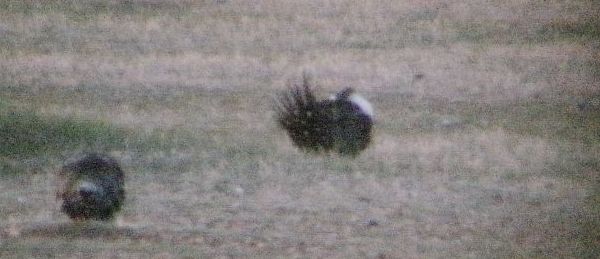
A week ago today, the federal government proposed a “threatened” listing for the Greater Sage Grouse in Nevada and California, as part of a larger study considering whether the species as a whole should be listed. I am a great lover of these gallinaceous birds, though my encounters with them have been but brief. As such, I am delighted to see them receive protection.
Naturally, not everyone is equally delighted. The usual suspects — miners, ranchers, and energy developers — are concerned about the economic impacts. The other usual suspects who just hate everything the federal government does, well, they hate everything the federal government does; it’s just another Friday full of haterade for them! The latter are probably best ignored; the former are part of the never-ending dance of compromise out here in the west, a dance that I think is perhaps epitomized in Montana, with our constitutional right to a clean and healthful environment and our simultaneous possession of a large population who appear to think that predators are for destroying and prey are for filling a human’s freezer, full-stop.
There is certainly much to be said for avoiding unnecessary antagonism with these folks, many of whom see no contradiction between their professed love of the outdoors and their political stances. Nevertheless, the fact of the matter is that federal listing has been an unprecedented success in saving threatened species in a way that localized efforts and appeals to voluntary human restraint simply have not. Private efforts are inevitably, almost by definition, atomized. The ship of state, on the other hand, is slow and has a very wide turning radius, and when you need consistency from generation to generation of a bird population, that can be quite valuable.
Especially valuable to a bird like the Sage Grouse. As you know from my previous post on the species, these birds need to congregate to complete their breeding rituals, so the floor of viable population may well be higher than for similar birds that do not use a lekking system. They also need a kind of habitat that is often denigrated — dry, poor for grazing, and not even aesthetically pleasing to most human eyes, sagebrush and other deserts are often used as dumping grounds for development, made over at great expense into poor-quality faux grasslands, or seen only as a barrier to the mineral resources beneath.
Ted Koch, the Nevada state supervisor for the USFWS, says it best in the linked article: “”It’s not the 11th hour for sage grouse here, but it is maybe the 10th hour… And that’s good news. It means we have some time and space to turn things around.” Here’s to saving more birds in the tenth hour.













It may may not be the “11th hour” for the greater sage-grouse, but it is for the Gunnison sage-grouse. With only 5,000 of these birds remaining we need to act NOW to protect this bird from extinction during our lifetime. You can learn more about our campaign to save the Gunnison sage-grouse at http://www.loveanimals.org/wild/save-the-sage-grouse.html